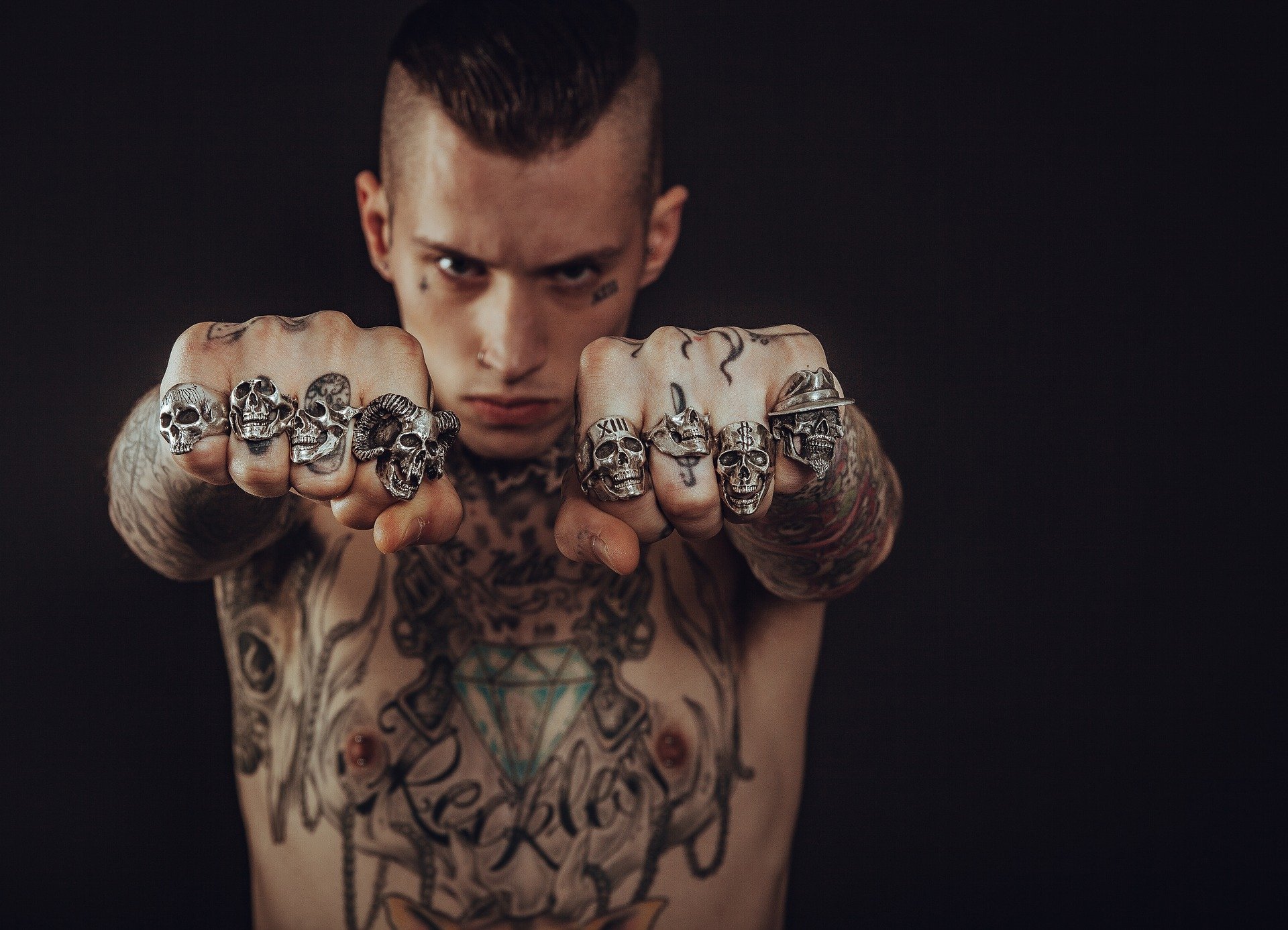Many styles and techniques of tattooing include traditional, blackwork, portrait, watercolour, and more. Each type has unique characteristics and methods; tattoo artists may specialize in one or several styles.
Tattooing is an ancient art form practised for thousands of years, and it involves using a needle to insert ink into the skin to create a permanent design. Over the centuries, tattoo artists have developed a variety of styles and techniques to create unique and beautiful tattoos.
One of the most common styles of tattooing is American traditional, also known as “old school.” This style features bold lines, bright colours, and iconic imagery such as anchors, swallows, and roses. American traditional tattoos are often inspired by the tattoo flash art of the early 20th century and are known for their bold graphic design.
Another popular style is Japanese tattooing, known for its intricate, detailed designs. Japanese tattoos often feature traditional imagery such as dragons, samurai, and cherry blossoms. They are typically done in black ink with shading techniques to create a sense of depth and movement.
Realistic tattooing is a style that seeks to recreate the look and feel of a photograph or painting on the skin. This technique requires a high level of talent and attention to detail, as the tattoo artist must carefully blend colours and shades to create a lifelike image.
Watercolour tattoos
Watercolour tattoos are a relatively new style that has recently gained popularity. These tattoos use a loose, painterly technique to create a vibrant, abstract look. Watercolour tattoos often feature soft, blurred edges and a flowing, ethereal design.
Watercolour tattooing is a style in which the tattoo artist uses a more fluid and paint-like technique to create a tattoo design that resembles a watercolour painting. Watercolour tattoos often have a softer, more ethereal and dreamy look, with a mix of vibrant and pastel colours that blend and fade into each other in a way that mimics the look of water color paint. They can be done in various styles, from more realistic to more abstract or stylized.

Watercolour tattoos are typically created using a combination of lines and shading techniques to build the design, with the artist carefully blending and layering the ink to achieve the desired effect. Because of the fluid nature of the method, watercolour tattoos can be more prone to fading and colour blending over time compared to more traditional tattoo styles. They are often considered more of a trend or style choice and are typically chosen for their artistic and expressive qualities rather than longevity.
Blackwork tattooing
Other popular styles of tattooing include black work. Black work tattooing is a style that primarily uses black ink to create bold graphic designs. “black work” refers to solid black ink in the tattoo rather than colour or shading. Blackwork tattoos can take many forms, from simple line work and geometric patterns to elaborate, ornate designs.
They are often used to create a bold, striking visual effect and can be used to tattoo various subjects, including animals, symbols, and abstract designs. Some tattoo artists specialize in black work tattooing and have developed their own unique styles within this genre. Black work tattoos are typically done using traditional tattooing techniques, with the ink applied to the skin using a needle and electric tattoo machine, which involves the use of solid black ink to create bold, graphic designs and Neo-traditional, which combines elements of traditional tattooing with a more modern, illustrative style.
Portrait tattooing
Portrait tattooing is a style of tattooing in which an artist creates a tattoo that is a detailed and accurate representation of a person’s face or a portion of a person’s face.
This can include the person’s eyes, nose, mouth, and hair. Portrait tattoos are typically created using a combination of lines, shading, and colour to create a realistic and lifelike image of the person. They can be done in various styles, from highly practical to more stylized or artistic. Portrait tattoos are often done to memorialize or honour a loved one or celebrate a significant person or event in the wearer’s life.
Dot work” tattoos
In addition to these styles, there are also a variety of tattooing techniques that artists use to create different effects. For example, “Dot work” tattoos use dots to create a shading effect. In contrast, linework tattoos rely on bold lines to create a graphic look.
“Dot work” tattoos, or stippling or pointillism tattoos, involve using tiny, precise dots to create a desired image or design. This style of tattooing is characterized by the use of tiny, closely spaced “dots” of ink to build up layers of colour and form an image. The “dots” are usually applied using a single needle or a small group of needles, and the tattoo artist uses a steady hand and precise control to create the desired effect.
Dot work tattoos can create a wide range of designs, from highly detailed, photorealistic images to more abstract, geometric patterns. They often create a unique, intricate look that is difficult to achieve with other tattooing techniques. Because the dots are applied one at a time, “Dot work” tattoos can be time-consuming, but the resulting tattoos can be striking and beautiful.
If you are considering getting a “Dot work” tattoo, choosing an experienced tattoo artist skilled in this technique is essential. The artist should be able to work with you to create a design that is both aesthetically pleasing and well-suited to your skin type and tattoo placement. It is also essential to take good care of your tattoo during the healing process to ensure it heals properly and maintains its quality over time.
No matter what style or technique a tattoo artist uses, the most critical aspect of tattooing is the artist’s skill and artistry. A talented tattoo artist can create a beautiful, unique tattoo that will last a lifetime.